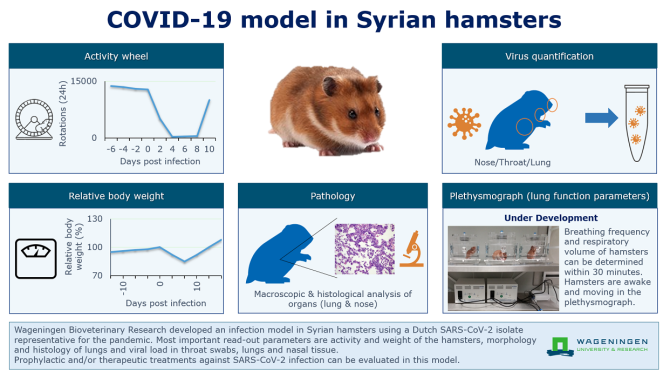
Testimonial
COVID-19 model in Syrian hamsters
Severe Acute Respiratory Syndrome Corona Virus 2 (SARS-CoV-2) is currently causing a pandemic outbreak. Infections with SARS-CoV-2 results in Corona Virus Disease 2019 (COVID-19) in humans, causing symptoms such as fever, dry cough, fatigue and loss of smell and taste. SARS-CoV-2 is a zoonotic virus that originates from bats and has the potential to infect many different species including non-human primates, ferrets, cats, minks, hamsters and humans.
Animal model
Many companies are (further) developing or improving vaccines or antiviral compounds to prevent and treat COVID-19. To evaluate the effect of these newly developed interventions, animal models are essential. Wageningen Bioveterinary Research (WBVR) has set-up an infection model in Syrian hamsters. A Dutch SARS-CoV-2 isolate representative for the pandemic outbreak is used to infect the hamsters. The other variants (beta, gamma and delta) will soon be available for research at WBVR.
Read-out parameters
The main read-out parameters for infection are loss of body weight (up to 20%), decreased activity in the running wheel, pathological changes in the lung and viral load in throat swabs, lung and nasal tissue (see infographic) and presence of neutralizing antibodies. Our animal model allows to show improvement in the measured read-out parameters when a successful intervention strategy is applied.

In vitro models
Besides the animal model, WBVR also developed in vitro models that allow to test efficacy of antiviral compounds in a cell culture. This in vitro model can be used to screen multiple compounds for their antiviral capacity before proceeding to in vivo animal experiments.
Download:
- Efficacy testing of SARS-CoV-2 antivirals (PDF)